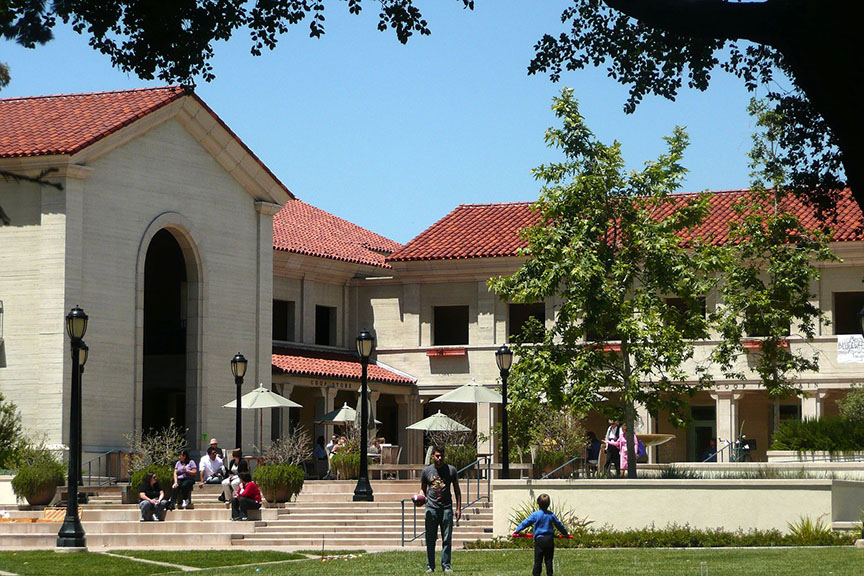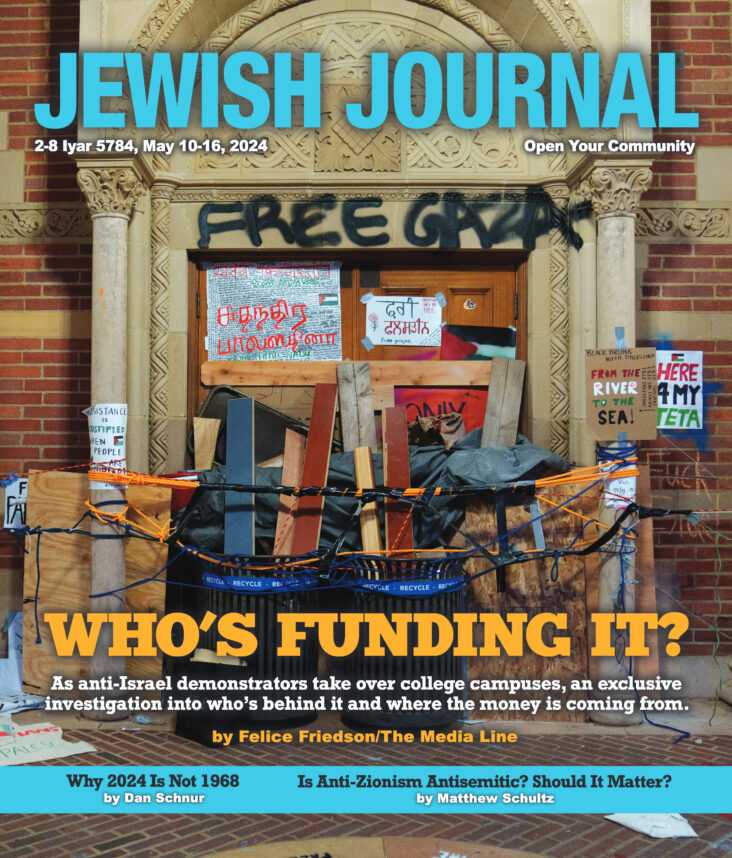When “Dead Sea Scrolls: The Exhibition” opens March 10 at the California Science Center in Los Angeles, it will be the largest display of its kind ever shown outside of Israel, spotlighting 20 scrolls in two rotations, more than half of them never before seen in the United States, and some never shown publicly since their discovery in caves near the ancient settlement of Qumran, about a mile from the Dead Sea.
“Nobody who would have seen this show before would have seen the scrolls that will be in Los Angeles,” co-curator Risa Levitt Kohn said of the traveling exhibition, which originated in 2010 at New York’s Discovery Times Square and has appeared in Boston and Philadelphia.
The scrolls are part of a cache of more than 900 documents, in tens of thousands of fragments, which were discovered in 11 caves near Qumran — texts that are sectarian, liturgical and religious, including the oldest known copies of the Hebrew Bible, all penned between 250 B.C.E. and 68 C.E.
The Los Angeles installation’s added features include fragments from Psalms; “The Book of Giants,” in which fallen angels, or nephilim, take human wives who give birth to gargantuan offspring, while introducing evil into the world; and “The War Scroll,” which outlines the anticipated final battle between good and evil, or “The “Sons of Light” against “The Sons of Darkness,” complete with detailed army strategies and the blowing of trumpets.
Appropriate for the venue, the California Science Center showing also will delve more deeply into the cutting-edge science that has allowed scholars to piece together and study the scrolls, all of which will be explained in videos as well as interactive and multimedia displays. Scientists at Hebrew University, for example, are investigating the chemical composition of the scrolls’ parchment and ink by artificially aging modern materials known to have been used during the Second Temple period, and through experimentation are deciding how best to sample the fragile ancient documents themselves.
Others are engaging in DNA analysis of the parchment upon which the scrolls were written, “so that each scroll will have a unique genetic fingerprint,” David Bibas of the California Science Center said.
“If you know that two fragments come from the same animal, you may have an easier time piecing them back together,” said Levitt Kohn, who, among her other titles, is a professor and chair of the religious studies department at San Diego State University.
Carbon 14 dating is also blended with spelling and handwriting analysis to help date the scrolls.
Then there is the new technology of multispectral imaging, developed at the Jet Propulsion Laboratory in Pasadena, which breaks down images of scrolls into pixel fragments, allowing scientists not only to better read smudged or blackened texts, but also to detect microscopic deterioration not yet visible to the naked eye. The Israel Antiquities Authority is now involved in a project, sponsored in part by Google, which will use the technology to create high-resolution photographs of the scrolls that eventually will be available online.
When Levitt Kohn and Debora Ben-Ami of the Israel Antiquities Authority created the touring exhibition about five years ago, they envisioned a show much larger in scope and historical context than previous exhibitions of the scrolls. When the “Dead Sea Scrolls” exhibition was on display at the San Diego Natural History Museum in 2007, also curated by Levitt Kohn, for example, fewer than 100 artifacts accompanied the ancient documents, mostly dating from the community at Qumran. Compare that to the more than 600 objects that appear in the current traveling show, which date all the way back to the first Israelite villages in Israel’s central hill country, circa 1200 B.C.E. “The goal of the traveling exhibition is not just to show the scrolls, but also to tell the backstory,” Ben-Ami said in an interview alongside Levitt Kohn at the California Science Center.
“The scrolls get a lot of press because they’re such a significant archaeological find, but they’re just a window into an entire period of time that takes place before the scrolls were composed and copied,” Levitt Kohn said. “This is really the first time in any Dead Sea Scrolls exhibition that we’ve been able to go back to the beginning — to the Israelite period. We’re looking at the scrolls as the culmination of the biblical period rather than just the beginnings of ancient Judaism.”
The most ancient artifacts on display date from more than 3,000 years ago, including collared-rim storage jars, which possibly were used to store grain, circa 1100 B.C.E., as well as real stones from a typical four-room house that will be used to re-create a dwelling from Israel’s hill country.

A fragment from “Genesis” in the Dead Sea Scrolls. Photo by Shai Halevi, Leon Levy Dead Sea Scrolls Digital Library, Israel Antiquities Authority
Objects dating from the eighth century B.C.E. reveal the beginnings of Hebrew as a written language, such as an alphabet table, written on a shard of pottery (the era’s scrap paper), which depicts what is likely a school boy’s primer. From the same period, a busty terra cotta figurine of the Canaanite goddess Asherah, which possibly was used in fertility and pregnancy rituals, suggests that many ancient Israelites believed the goddess to be the consort to the God of Israel.
The exhibition opens with floor-to-ceiling video screens depicting a current archeological dig at the Givati parking lot in Jerusalem, as an actor dressed as an archaeologist introduces the show. In the second gallery, a timeline, accompanied by artifacts including jewelry, weapons, coins and pottery, traces the Holy Land’s history backward from 1948, through various invasions by the Romans, Greeks, Persians and Assyrians and finally to the origins of Israelite culture.
Also on display throughout the exhibition will be iron arrowheads dating from the 701 B.C.E. siege on Lachish, which is described in the biblical book of Kings; a crudely drawn menorah, cut into a rock and found in an ancient drainage canal close to the Temple Mount, which may have been inspired by the artist’s visit to the Second Temple; and a hoard of Tyrian shekels, discovered at Qumran, which may have been collected to pay the Temple tax.
In the dimly lit scroll gallery, a fragment from Genesis recounts the return of the biblical Jacob to the land of Canaan; scraps from Exodus describe Moses at the burning bush; and parts of Isaiah predict the end of times, a theme popular in the scrolls. They were, after all, written during an era of severe political turmoil, ending with the Roman destruction of the Second Temple in 70 C.E.
In a video, scholars proffer their alternative theories of what took place at Qumran some 2,000 years ago. Was the site an ancient center for pottery production, given its numerous kilns and sophisticated water system? A library where residents copied and composed texts? The home of a sectarian community whose members were highly concerned with ritual purity — as at least 11 mikvaot (ritual baths) were discovered at the site?
In a telephone interview from New York, Lawrence Schiffman, an academic consultant to the exhibition and a world-renowned authority on the scrolls, offered his own take about the denizens of Qumran. They were, he said, a group of pious but disenfranchised Sadducees, distraught over the regime’s favoring of the Pharisees around 150 B.C.E., who eventually fled Jerusalem and “became radicalized” in the years before they arrived at Qumran, or perhaps while living at the site.
Like other Jews of the time, the community celebrated Shabbat, kept kosher and immersed in the mikveh, but their theological beliefs were unique and extreme. The community fervently believed, for example, in the concept of predestination — the idea that God had preordained the fate of every human being. “They say that over and over again in the scrolls,” Schiffman said. “It almost sounds like Calvinism.”
Moreover, the Qumran residents were obsessed with the forces of good and evil, in the form of angels and demons, which they believed influenced all of humanity. “The Book of Giants” may have appealed to them “because it explains how evil entered the world,” Schiffman said. In the scroll titled “Tobit,” which also will be on display at the California Science Center, a young man outwits a demon, Asmodeus, who has killed his bride’s seven previous husbands, while an angel in disguise, Raphael, helps cure the titular character of his blindness.
“The scrolls say outright that you should hate the outsider,” Schiffman added, meaning all other Jews and non-Jews. In fact, one scroll describes their impending “shame without end, humiliation [and] destruction by the fire of dark regions.”
“This certainly wasn’t normative Judaism at the time,” Schiffman said.
The history of the discovery, sale and study of the scrolls is as complex as questions about their origins. In 1947, as the story goes, a Bedouin looking for a lost goat near the ruins of Qumran threw a stone into a cave and heard the sound of pottery shattering. What he discovered inside the cave didn’t initially appear all that impressive: several clay jars along with seven ancient documents that the Bedouin would go on to sell to an antiquities merchant in Bethlehem. The merchant sold some of those scrolls to the famed Israeli archaeologist Eleazar Sukenik, who risked life and limb to purchase them in the fraught last days of the British Mandate. “There he was, holding the oldest copy of the book of Isaiah, which actually foretold the restoration of a Jewish state in the land of Israel, on the very night in which the United Nations voted that there should be a Jewish state,” Schiffman says in a video at the exhibition.
Other scrolls somehow came into the possession of a Syrian Christian archbishop in Jerusalem, who in 1954 placed an ad in the Wall Street Journal seeking a buyer for the documents. Sukenik’s son, Yigael Yadin, wanted to purchase the scrolls, even though no direct negotiations were possible in those days of strife between Arabs and Jews. And so Yadin organized an undercover operation in which a middleman, a Bible professor from Hebrew Union College posing as a non-Jew, bought the documents, which were eventually put on display at the Shrine of the Book, a wing of the Israel Museum in Jerusalem, along with the scrolls previously purchased by Yadin.
Meanwhile, a team of Christian scholars, working for the Palestine Archaeological Museum in what was then Jordan, was urgently searching for additional scrolls in the caves at Qumran as well as excavating the ancient settlement; no Jewish academics were allowed.
But as they began piecing together scroll fragments in the 1950s, they harmed the fragile materials by exposing them to sunlight, smoking as they worked and splicing fragments together with tape. (A video in the exhibition demonstrates how the Israel Antiquities Authority had to painstakingly remove the tape and conserve the documents after all the damage.)
All the while, the scholars at the Palestinian museum hoarded the scrolls, refusing to make them available for study to other historians; they were allowed to remain in charge even after the Six-Day War, when Israel conquered the area of Qumran and its caves. But then the editor-in-chief of the scrolls team made anti-Semitic remarks in an interview with the Haaretz newspaper; Israeli authorities subsequently replaced him and made the scrolls available to historians throughout the world.
Although the original Christian scholars had hoped the scrolls would reveal aspects of the origin of Christianity, there is no mention of Jesus or the early Christian religion in the scrolls. Rather, the writings offer a unique glimpse into the diversity of Judaism at the time, Schiffman said.
“When you look at the parchment and the ink and the letters,” Levitt Kohn said, “it’s as close as you can get to the actual people who lived during that period. We can get some insight into who these people were, and that’s a very powerful thing.”
For more information about the exhibition, visit californiasciencecenter.org.






















 More news and opinions than at a Shabbat dinner, right in your inbox.
More news and opinions than at a Shabbat dinner, right in your inbox.